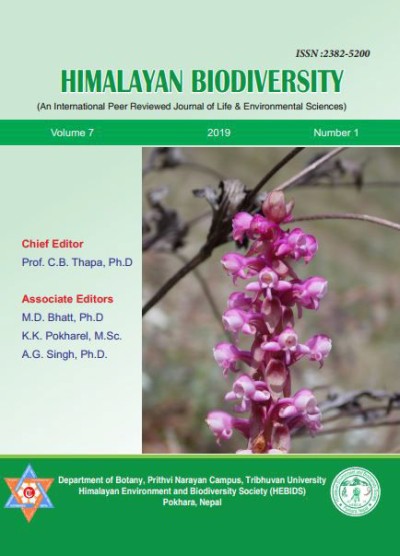Ethno-Medicinal Uses of Plants in Putali Bazar Municipality of Syangja District, Nepal
DOI:
https://doi.org/10.3126/hebids.v7i1.40187Keywords:
Conservation, disease, ethno-medicine, traditional medicineAbstract
In the several rural areas of Nepal, due to lack of modern health facilities, people still rely on traditional medicine practice. This present research seeks to explore the information of medicinal plants used by the people of Putalibazar municipality of Syangja district. In total of 108 plants species belonging to 100 genera and 60 families were recorded as ethno medicinal plants of Putalibazar Municipality. In which dominant families were Poaceae, Fabaceae, Moraceae, Asteraceae, Lamiaceae, and Euphorbiaceae respectively with 7, 6, 5, 5 and 4 genera. On the basis of their habit, the plants species were climbers 7 spp. (6.48%), herbs 48 spp. (44.44%), shrubs 24 spp. (21. 82%) and trees 29 spp. (26. 85%). Some of the useful species are under the serious threat due to unsustainable activities. Hence, a proper documentation of useful plants with their present status and local traditional knowledge as well as practices is urgently needed. Effort should also be initiated to implement appropriate conservation measures for preservation and sustainable uses of these useful plants.
Downloads
Downloads
Published
How to Cite
Issue
Section
License
© Himalayan Environment and Biodiversity Society (HEBIDS)

